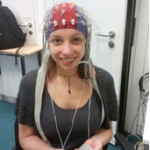Music and Neurosciences V – Blog 2 (Musical expertise and more?)
Hello Dear Reader
 Day 2 of Music and Neurosciences began well, as only a breakfast in France can….freshly baked bread and President Butter!! Oh if only this stuff was part of a healthy diet. No harm in a treat when you are in one of the homes of good food though 😉 After enjoying my breakfast I wobbled to the conference in time for the official welcome from the representatives of Dijon and the local university.
Day 2 of Music and Neurosciences began well, as only a breakfast in France can….freshly baked bread and President Butter!! Oh if only this stuff was part of a healthy diet. No harm in a treat when you are in one of the homes of good food though 😉 After enjoying my breakfast I wobbled to the conference in time for the official welcome from the representatives of Dijon and the local university.
The first symposium of the day was arranged by Sylvain Moreno, a researcher whose who features quite a lot in my new book. Sylvain has a big interest in the transfer effects of musical expertise. He started a few years ago, working on the theory that there was likely to be transfer between music and language skills. It appears now that the interest is turning to attentional control…
But more on Sylvain’s work in a minute…
The symposim was entitled ‘Music expertise and more? ‘
First we had a presentation by Vesa Putkinen, who made use of the visually stimulating Prezi format for his presentation. This software makes a nice change from PowerPoint but the hardware did appear to struggle a little with the transitions. Nevertheless, the presentation contained some fantastic longitudinal studies of musical training.
Longitudinal studies are an important step forward in the search for music transfer effects. They are expensive and suffer from high dropout rates but they help isolate the effects of music training that (ideally) are not present before the training starts.

In one of Vesa’s projects (MusicPupils) he reported 1-6 recordings for children from the age of 7, 9, 11, 13, 15, and 17yrs. That is an impressive data set of ten years testing! His measure is EEG and he reported increases in MMN (mismatch negativity) amplitude in children who took music lessons compared to a control group. The increased neural response applied to tests of melody, rhythm, mistuning and timbre.
One of his interesting findings related to an EEG component indicative of attention (P3a). Vesa reported a difference in this component in musical individuals compared to controls at age 13-15, but then not between 15-17 years of age. The possibility is that musical children might see early advantages in attentional processing that equalise to control children later in life.
 The next talk came from Dana Strait who gave a succinct presentation on the work she has completed with Nina Kraus regarding the cABR or complex auditory brain stem response. Complex refers to complex sounds like speech and music as opposed to simple sine tones. Her research has looked at over 300 individuals from three different cross section populations, pre-schoolers, older children and adolescents.
The next talk came from Dana Strait who gave a succinct presentation on the work she has completed with Nina Kraus regarding the cABR or complex auditory brain stem response. Complex refers to complex sounds like speech and music as opposed to simple sine tones. Her research has looked at over 300 individuals from three different cross section populations, pre-schoolers, older children and adolescents.
The older children and adolescents but not the pre-schoolers reliably show more faithful reproduction of harmonics in noise.
Dana discussed a theory as to how musical training may sharpen basic neural responses. This theory centres on cellular changes in a brain structure called the inferior colliculus. This crucial pathway in the auditory system may play a crucial role in promoting the acquisition of related learned abilities such as language.
 The third talk came from the chair, Sylvain Moreno. He talked about intervention programs, where music lessons are introduced, compared usually to visual art lessons.
The third talk came from the chair, Sylvain Moreno. He talked about intervention programs, where music lessons are introduced, compared usually to visual art lessons.
In previous studies, after one month of lessons, musical interventions have been associated with better verbal IQ.
Newer studies in older adults suggest that inhibitory control may also be enhanced following musical training.
Following his data with children and adults, Sylvain has adopted a 3D model of music transfer effects characterised by the levels and nature of the transfer. This framework offers a model for future testing in this area.
The final talk was given by Glenn Schellenberg. Glenn summarised his thoughts on the transfer evidence to date, adding a welcome note of caution that musical training is likely to be a cause as well as a consequence of enhanced cognitive abilities and that differentiating these factors is very difficult – though longitudinal intervention studies are perhaps the best way to tackle this issue.
 Glenn spoke about his work linking personality to music transfer effects; perhaps different personality dimensions in children and adults. This will be a factor that of importance for future studies to consider. Glenn also gave described some new data linking a ukulele intervention in schools to an increase in social skills, as assessed by questionnaires.
Glenn spoke about his work linking personality to music transfer effects; perhaps different personality dimensions in children and adults. This will be a factor that of importance for future studies to consider. Glenn also gave described some new data linking a ukulele intervention in schools to an increase in social skills, as assessed by questionnaires.
The questions from the crowd at the end of this session were interesting but I thought the best came from Andrea Halpern who brought up the issue of having proper control groups for transfer studies. It is of course not obvious what is the correct control group for any one study and this would probably depend on the hypothesis in question.But this is a serious issue that needs to be considered in any intervention stufy.
A good morning’s brain activity! I headed for a nice cup of tea (yes, you can take the girl out of Britain…) and a chat with colleagues.
